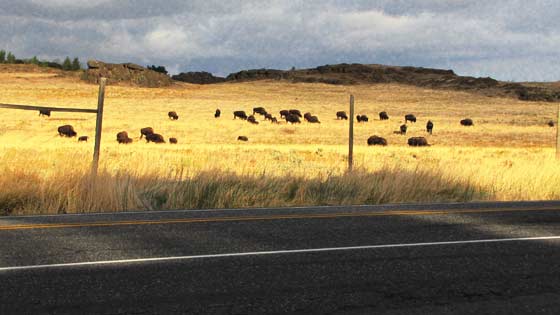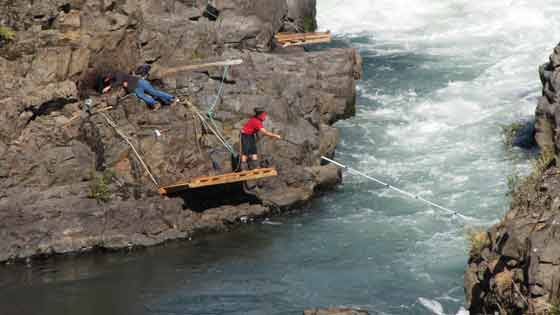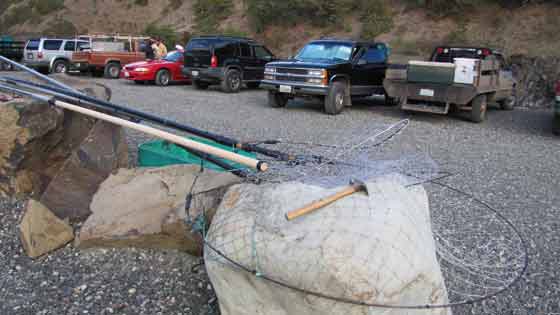
It almost seems fitting.
While following a tribal member of the Yakama Nation to their home to continue filming a story about their traditional fishing practices, we made an unscheduled stop for gas near his home. Across the street, I snapped a picture of a field of grazing buffalos that were present just as the sun was cutting across the field with a beautiful yellow glow. At the time, all I could think of, was the Nez Perce word for buffalo: Wahtonka!

Traditional Fishing Practices
Near Lyle, Washington, on the undamed, 78-mile long Klickitat River, the Yakama Nation tribe has nearly completed a new Klickitat Fishery to identify and tag the river’s fish that navigate through the narrow gorge (spring and fall chinook salmon, coho salmon, steelhead, and pacific lamphrey), improve the passage of these fish to the upper river subbasin area above the falls, and to collect fall chinook and coho salmon brood stock for the nearby hatchery. This season has seen record levels of Fall chinook on the Columbia River, and along the Lyle Falls Fishway that is located on the lower Klickitat River about 2 miles from where the river flows into the larger Columbia River.

The Yakama Nation fisherman (it’s usually the men who do the fishing) use these traditional dip net poles that are often 30 feet in length, and are capable of holding several fish at one time. The long poles are extended into the river along the steep banks, when the fishermen feel the fish moving inside the net, they turn the pole so that the netting encloses around the fish, and then they haul them to their wooden platforms. There, the fish are instantly killed with a club, and placed into burlap sacks before being transferred into large plastic ice buckets. The fish are sold to fish brokers where they end up in restaurants and markets, and also in smaller quantities to private individuals. While subsistence fishing is integral to the economic wellbeing of the tribe, the fish are an essential part of their daily diets, and a continuation of their traditional tribal practices.
